Features of breeding monstera at home
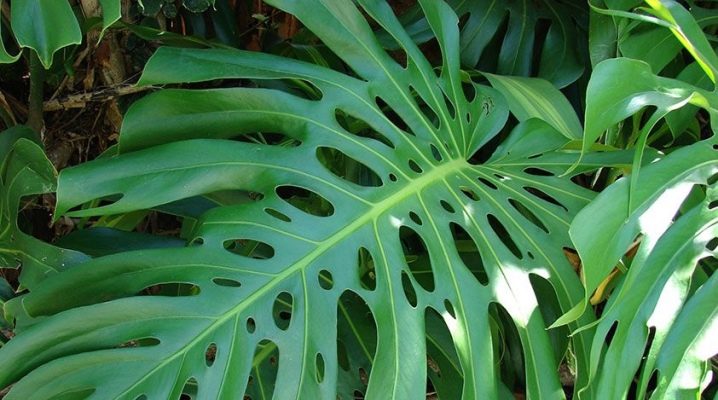
Monstera is one of the largest evergreens found in the tropics. In its natural environment, it can be found in the south and center of America, as well as in Asia. In appearance, it is a liana with a powerful, climbing stem, covered with light roots. The plant adapted for growing at home is undemanding and easy to care for, grows quickly and also multiplies. These qualities were highly appreciated by flower growers, so monstera is very popular among them.

Breeding conditions
To breed a monster at home, no special knowledge and skills are required, but for a high-quality and correct process, the following nuances must be taken into account:
- first of all, you should prepare a special substrate that is optimal for this species;
- the place for the plant should be chosen well-lit, since the plant loves light;
- after planting the cuttings, a prerequisite is to maintain a humid microclimate in the room, they need constant spraying with water for faster root growth;
- activates the growth of roots and fertilization of the soil;
- in addition to creating suitable conditions for the formation of a young plant, it is worth thinking about your protection, since the monstera is poisonous; if its juice gets on the skin, you can get injured.
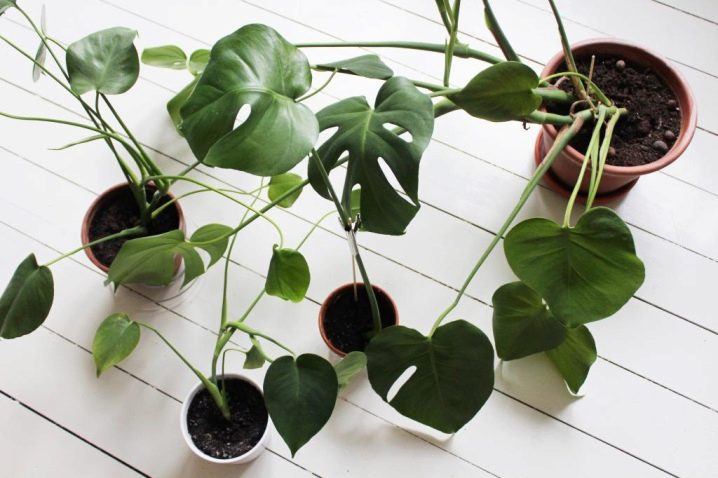
How to propagate by cuttings?
There are several ways to propagate this plant, cuttings are the easiest of them. Cuttings are taken from the middle or upper part of the stem, but the shoot must have at least one bud.
It is worth adhering to the following steps:
- treat the scion with a preparation that stimulates root formation;
- lower in an opaque container with separated water by one third for several days;
- make sure that the water is at room temperature;
- after the appearance of three young roots, the plant can be planted in a pot.
For planting monstera, the composition of the substrate is ideal (all components are taken in equal proportions), as:
- turf;
- peat;
- sand;
- humus.
When propagated by cuttings, the roots grow quite quickly, about 2-3 weeks, but until they are fully formed, new shoots and leaves do not appear. This situation can be corrected by feeding the scion with growth stimulants.
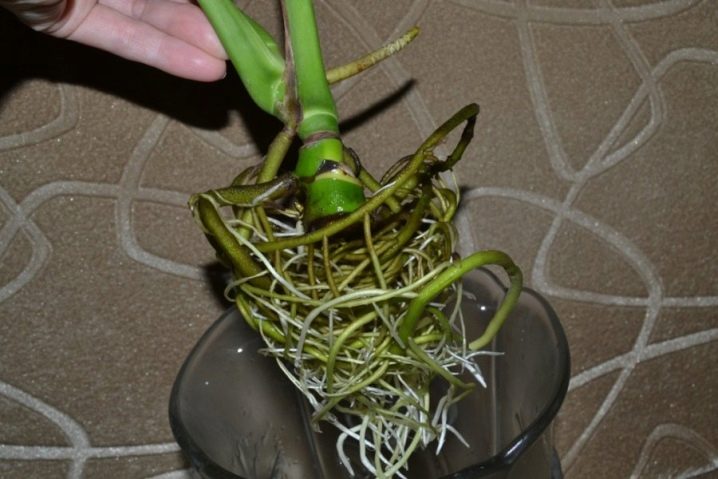
When propagating by cuttings in soil, you must perform the following steps:
- an outgrowth is planted in a container with a sandy or peat substrate;
- the soil temperature is maintained at +28 degrees, conditions of high humidity are created by covering the dishes with film or glass;
- when the roots appear in large volume, the cutting is ready for planting (about 3-4 weeks);
- transplant the plant into a pot with a prepared substrate.
This method of rooting has a drawback: at the base, the stem does not strengthen and does not grow, but remains the same size, because of this, the plant can easily break. To prevent this, you need to choose rather thick cuttings or use a support, or you can combine these two options.
They also use the horizontal method of rooting in the soil. A shoot with two buds is cut horizontally... It is placed lying on a light substrate, it can be moss, sand, or even a hydrogel. You do not need to sprinkle the stalk on top, but at least one kidney must necessarily touch the ground.The dishes with the plant are covered with foil, creating the conditions for a mini-greenhouse. The sprout must be regularly moistened and sprayed, and after the first roots and leaves appear, it can be planted in a pot.
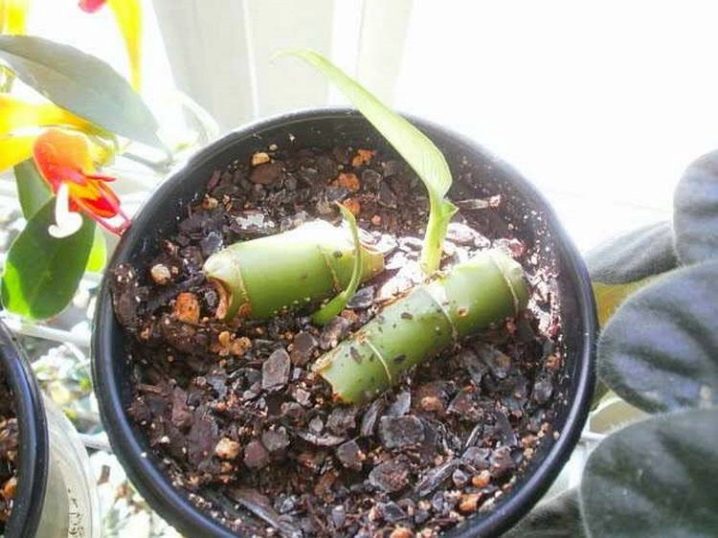
Rooting shoots
Very often, apical shoots are used for breeding monstera. To do this, the top should be treated with any preparation to stimulate root formation and left in a container with room temperature water for about two weeks. Wait until at least three roots appear. If there are more of them, the plant will grow faster and begin to form new leaves. Then the monster is planted in a flowerpot with soil prepared ahead of time.
How to propagate with a leaf?
You can grow a new plant from fallen leaves. If a monstera has dropped a piece of paper, do not throw it away. The leaf must be placed upside down in a container with clean water at room temperature, with a volume of at least 1.5 liters. The dishes are placed in a well-lit, warm place until the roots appear. When the formed roots grow a little and get stronger, the leaf can be transplanted into a large pot to a permanent place of growth. The type of substrate is taken the same as for other methods of reproduction.
It is better to wait for more roots, then the sprout can better take root in the soil... In order for the newly formed plant not to bend under its own weight, it must be tied to some kind of support.
You can understand whether a leaf has taken root or not by its appearance. If it is strong, not wilted or yellowed, it means that the plant has begun and begins to grow.
When using this breeding method, you should pay attention to the following nuances:
- the formation of the root system takes up to 1 month;
- the container for water must be taken opaque, since the roots of the monstera do not like light;
- very often the leaf withers even before the roots appear.
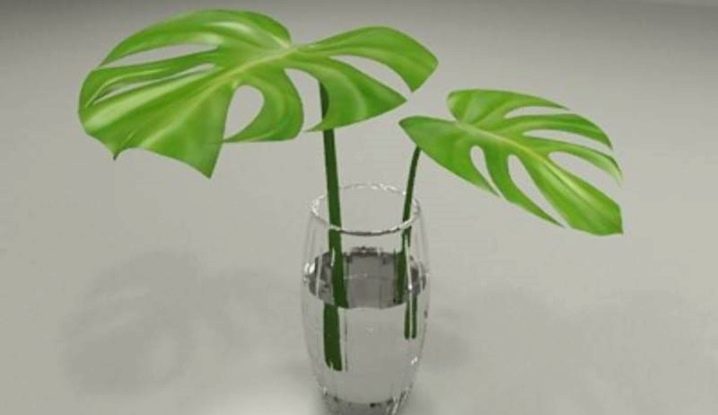
Breeding with aerial roots
Monstera, like some plants, has aerial roots, additional organs, the main task of which is to absorb moisture from the air. Even with a large number of aerial roots, they should not be removed, since they provide an additional supply of nutrients from the soil and air. Reproduction by layering with aerial roots is not a very difficult procedure. To do this, the selected stem in the required place around the circumference is covered with moistened moss and wrapped in polyethylene, creating a kind of greenhouse. They fix the bottom and top so that they hold well.
After the roots have formed, the sprout must be carefully separated from the adult and planted in a new pot. All sections must be disinfected with crushed charcoal without fail.
The best option is to look at the leaf near which the largest aerial roots grow. You need to wrap the film loosely so that there is free space for growth.... When planting a plant, do not forget that the monstera is quite large and very fast growing, so a small pot is not suitable. Like any other liana, the plant needs a support - it can be either an artificial stem or a moss pipe.

Possible problems
Seating a monster at home is not too difficult. But although it is not particularly demanding, it still needs some care. To avoid problems, you must follow certain rules when keeping this plant.
It is worth paying attention to the most common problems that may arise, such as:
- stops growing and developing - the location is incorrect, there is not enough light;
- the surface of the leaves is covered with brown spots - spider mite infestation;
- leaf plates begin to turn yellow - there is not enough moisture;
- leaves turn yellow and start to rot - excess watering, it is worth reducing their number;
- leaf edges dry out and turn brown - the air temperature is too high for the plant or it is too close to the heating devices, drafts are also possible;
- leaf plates covered with yellow spots - possible burns from direct sunlight;
- the leaves are wet, as if covered with dew - excessive moisture, you need to stop watering so that the soil has time to dry out;
- leaf plates lose their shape, become whole, without curly cuts - deficiency of nutrients in the substrate;
- the plant lends itself to some types of rot, then copper-containing preparations are used against them, and leaf diseases, while the damaged ones must be removed;
- of pests, monstera can be damaged by scale insects and nematodes (the fight consists in removing parasites and treating the plant with fungicides).
With proper care, there will be no need to solve problems with the appearance and healthy state of the flower.

Monstera can be planted nearby and get new plants without much hassle. You just need to choose the right seedling and create comfortable conditions for it to grow.
Care
Caring for a monster isn't very burdensome, but still some rules must be followed so that the plant takes root well and pleases with the appearance of new beautiful leaves.
- First of all, you need to know that for good growth and healthy condition, the plant needs the right substrate... First, drainage is placed on the bottom of the pot, mainly small expanded clay, then a ball of peat mixed with humus, and a 2-3 cm layer of sand. The proportions are taken in equal amounts. You can only plant cuttings in sand, but after the formation of roots, the plant sits in the prepared soil.
- Until the seedling is completely rooted, the soil must be often moistened, but not poured.... And also it is necessary to create a comfortable temperature. It should be kept within + 22– + 25 degrees. The higher the temperature, the more the leaves grow. You can position the plant under a transparent jar or bag, thereby creating a greenhouse environment. An impromptu greenhouse must be opened periodically.
- Seedlings also need high humidity. Spraying, if possible, should be carried out 2 times a day.... You can remove the cans after the plant has grown well.
- Good lighting is a prerequisite for the growth of the shoot. Light should be diffused and abundant, otherwise the processes of growth and rooting will stop. It is this indicator that influences the formation of the original pattern on the sheet plates and a rich green color. An adult plant no longer needs abundant lighting, so it can be rearranged in a somewhat shaded place.
- Fertilizing the monstera during breeding is also a necessary factor. It is enough to fertilize once a month with weak solutions of complex fertilizers... To do this, dilute 2 grams of the drug in 1 liter of water and water it. After such a procedure, the growth of seedlings is noticeably accelerated.
- When planting young plants, you need to remember that they grow very quickly, so even for small sprouts, do not choose small pots.
Observing the simple rules of reproduction and care, you can independently grow a beautiful and strong monster, which will delight you for a long time with its majestic appearance.
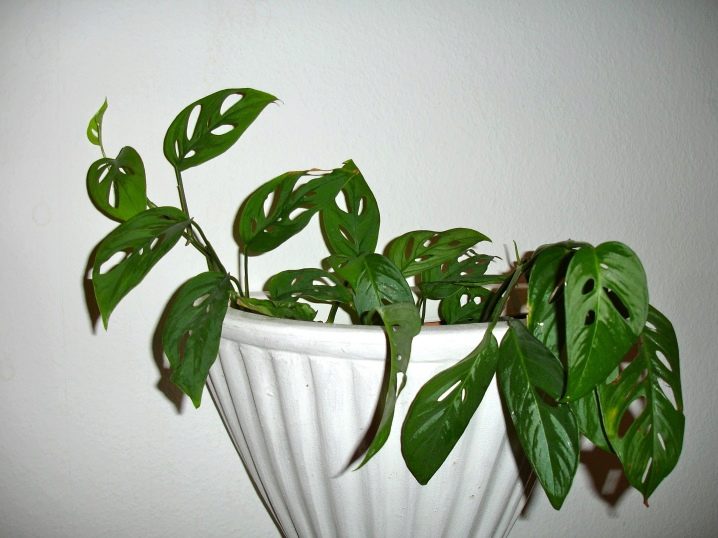




























The comment was sent successfully.